Lake Superior, the largest Great Lake by surface area and volume, is a vast destination that spans the borders of the United States and Canada.
With a surface area of 31,700 square miles (82,100 square kilometers) and a maximum depth of 1,332 feet (406 meters), Lake Superior is a genuine inland sea that attracts millions of visitors each year.
The Lake Superior region has a long history that goes back thousands of years.
The shores of the lake were originally inhabited by various Native American tribes, including the Ojibwe, Cree, and Sioux.
French explorers and fur traders such as Étienne Brûlé and Pierre-Esprit Radisson began navigating the lake's waters and establishing trading posts along its shores in the 17th century.
The discovery of copper and iron ore in the region in the 19th century led to a boom in the mining and shipping industries, with towns such as Marquette, Michigan, and Duluth, Minnesota, becoming important ports.
Lake Superior now offers a wide variety of natural wonders and outdoor activities for the adventurous traveler.
The lake's rugged shoreline is dotted with towering cliffs, pristine beaches, and numerous state and national parks, such as Isle Royale National Park in Michigan and Pukaskwa National Park in Ontario.
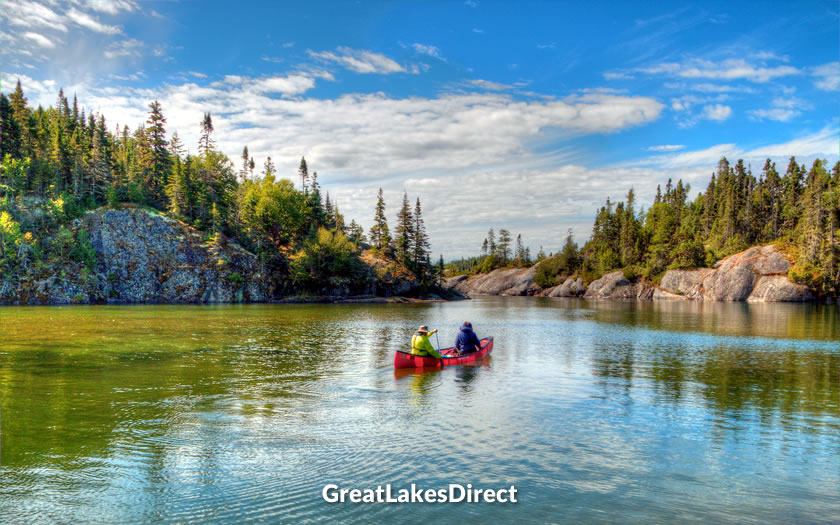
Pukaskwa National Park
These protected areas provide ample opportunities for hiking, camping and wildlife viewing, with the chance to spot native species such as moose, wolves and bald eagles.
For those drawn to the water, Lake Superior offers plenty of possibilities. Boating enthusiasts can explore the lake's wide-open spaces, visiting remote islands and hidden coves accessible only by water.
Anglers will enjoy the opportunity to catch trophy-sized lake trout, salmon and walleye. The lake's cold, clear waters also attract scuba divers eager to explore some of the historic shipwrecks.
The Lake Superior region is also known for its thriving culinary scene that highlights the bounty of the land and water.
Visitors can enjoy locally caught whitefish, sample craft beers from the many microbreweries that dot the shoreline, and indulge in regional specialties such as wild rice soup and pasties, a type of savory hand pie that originated with Cornish miners in Michigan's Upper Peninsula.
Travel along the shores of Lake Superior and you'll encounter small towns and bustling cities that offer a glimpse into the region's unique culture and history.
Duluth, Minnesota, at the westernmost end of the lake, is a former industrial powerhouse that has reinvented itself as a hub for outdoor recreation and the arts. The city's revitalized waterfront is home to the famous Aerial Lift Bridge, which offers spectacular views of the harbor and lake beyond.
Thunder Bay, Ontario, located on the North Shore of Lake Superior, is a city full of indigenous and European history.
Visitors can explore Fort William Historical Park, a living history museum that recreates the fur trading post as it existed in the early 19th century. Nearby Sleeping Giant Provincial Park offers breathtaking panoramas of the lake and surrounding wilderness, with hiking trails that wind through rugged cliffs and pristine forests.
The Keweenaw Peninsula, which juts out into Lake Superior from Michigan's Upper Peninsula, is another must-see destination.

The old Delaware copper mine
This remote and rugged region was once the heart of the country's copper mining industry, and visitors can explore the abandoned mines and ghost towns that dot the landscape. The peninsula is also home to the Keweenaw National Historical Park, which preserves and interprets the area's mining heritage.
No visit to the Lake Superior region would be complete without a trip to Wisconsin's Apostle Islands National Lakeshore.
This stunning archipelago of 21 islands features pristine beaches, historic lighthouses, and sea caves that can be explored by kayak. Visitors can also take a scenic cruise around the islands, taking in the rough beauty of the coastline and the clear blue waters of the lake.
Lake Superior is a destination that attracts the intrepid traveler with its natural beauty, history, and endless opportunities for adventure. Whether you're seeking solitude in the wilderness, a glimpse into the region's fascinating past, or simply a chance to marvel at the power and majesty of this inland sea, Lake Superior is sure to leave a lasting impression.
Marquette is the largest city in Michigan's Upper Peninsula and is known for its stunning natural beauty and outdoor recreational opportunities.
The city is home to Northern Michigan University and boasts a lively downtown area with unique shops, restaurants, and breweries.
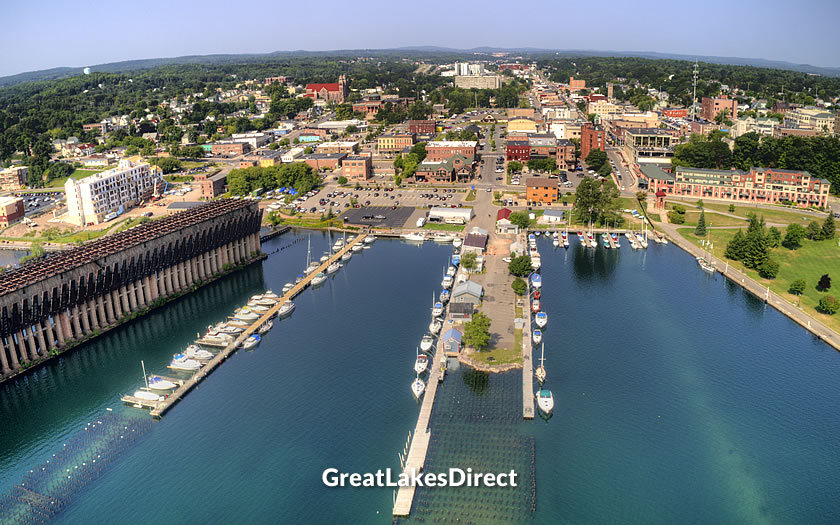
Aerial view of downtown Marquette
Marquette's Presque Isle Park offers lovely views of Lake Superior and features hiking trails, beaches, and a historic lighthouse.
The city also hosts numerous festivals throughout the year, including the popular Hiawatha Traditional Music Festival and the U.P. 200 Sled Dog Race.
![]() Discover more about Marquette
Discover more about Marquette
Munising is a small city located on the southern shore of Lake Superior, known as the gateway to the Pictured Rocks National Lakeshore.
This unique geological formation features colorful cliffs, waterfalls, and pristine beaches that attract visitors from around the world.
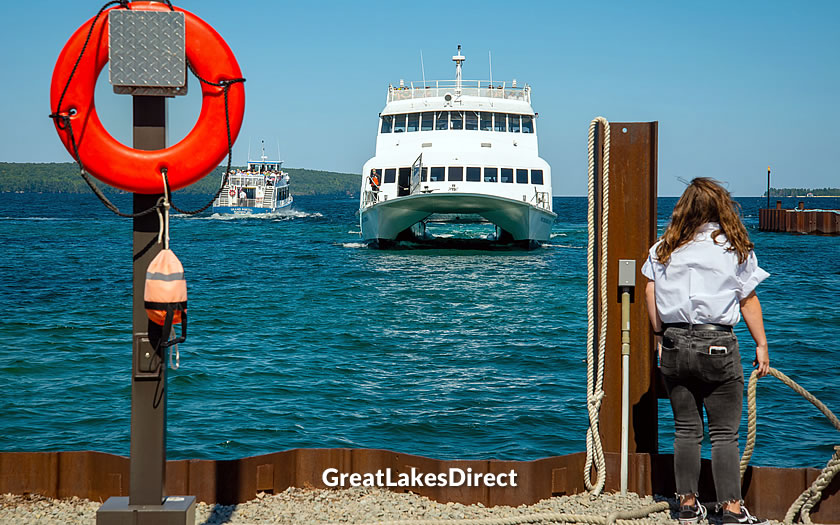
Passenger ferries in Munising
Munising is also close to Grand Island, a historic island offering hiking trails, beaches, and remnants of an old fishing village.
![]() Discover more about Munising
Discover more about Munising
Copper Harbor is a small, picturesque town located at the northern tip of Michigan's Keweenaw Peninsula, known for its stunning natural beauty and rich mining history.
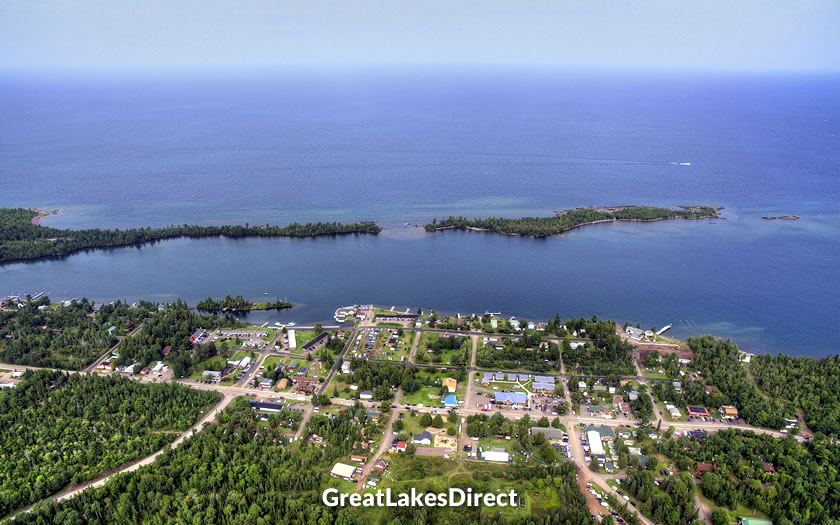
Aerial view of Copper Harbor
It is a popular destination for outdoor enthusiasts nowadays, offering world-class mountain biking trails, hiking, and scenic drives along the Brockway Mountain Drive.
The town also features the Fort Wilkins Historic State Park, which preserves a restored 1844 frontier military outpost and offers insights into the area's history.
Copper Harbor is also one of the ferry ports which access the Isle Royale National Park, a group of islands further to the north in Lake Superior.
![]() Discover more about Copper Harbor
Discover more about Copper Harbor
Bayfield is a small city on the Wisconsin shore of Lake Superior known as the "Gateway to the Apostle Islands", a group of 21 islands featuring pristine beaches, lighthouses, and sea caves.
The ferry to Madeline Island, the largest of the Apostle Islands, departs from Bayfield.
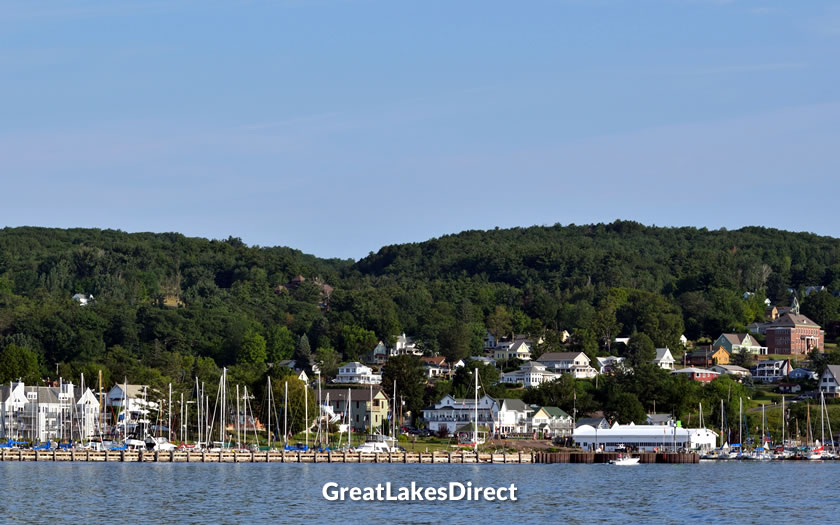
View of Bayfield
Bayfield is also famous for its annual Apple Festival, which features live music, arts and crafts as well as apple-themed treats.
The downtown area, listed on the National Register of Historic Places, features well-preserved Victorian-era architecture dating back to the 1870s-1880s when Bayfield was a busy shipping port.
![]() Discover more about Bayfield
Discover more about Bayfield
Two Harbors is a port town located on Minnesota's North Shore of Lake Superior. As its name suggests, the town is located between two bays: Agate Bay and Burlington Bay.
The city's growth was fueled by the discovery of iron ore in the region and the construction of the Duluth & Iron Range Railroad.
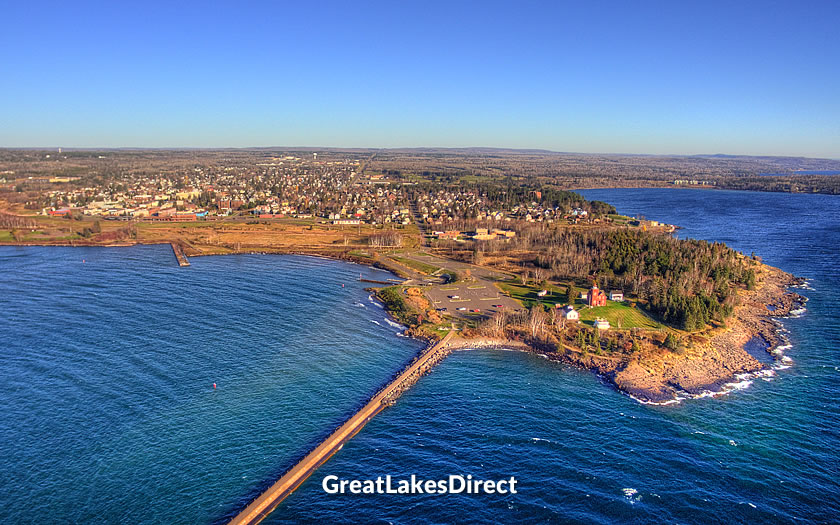
View of Two Harbors
Today, Two Harbors serves as a hub for outdoor enthusiasts, offering access to the Superior Hiking Trail, paved walking and biking paths, and two of Minnesota's most popular state parks: Gooseberry Falls and Split Rock Lighthouse.
The city's waterfront features the iconic Ore Docks, where massive iron ore tankers load their cargo, and the historic Edna G tugboat, the last steam-powered tugboat on the Great Lakes.
![]() Discover more about Two Harbors
Discover more about Two Harbors
Grand Island, located just off the coast of Munising, Michigan, is a 13,500-acre island in Lake Superior. It is part of the Hiawatha National Forest and is accessible by ferry from the mainland.
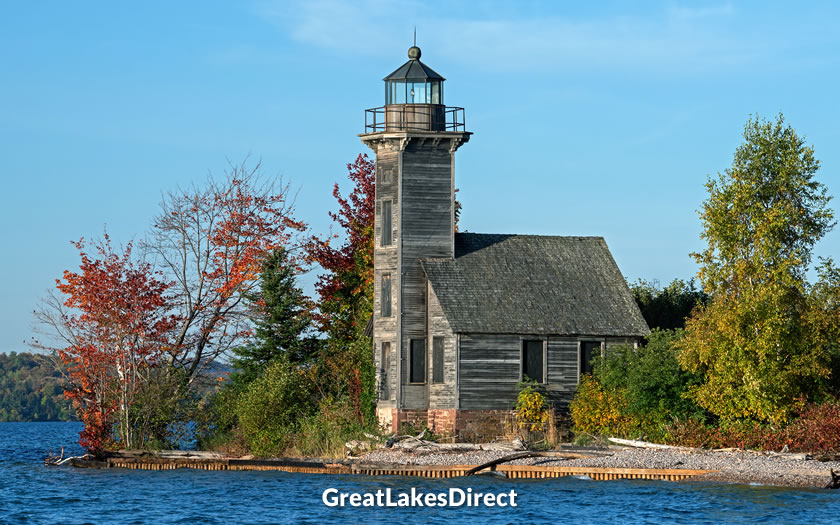
Grand Island East Channel Lighthouse
The island was home to a thriving fishing and lumber industry in the late 19th century. Today, visitors can explore the island's historic sites, including the Grand Island East Channel Lighthouse.
The island offers numerous outdoor recreational activities, such as hiking, mountain biking, and kayaking along its rugged shoreline.
Isle Royale is a remote island located in the northwestern portion of Lake Superior, about 55 miles from Michigan's Upper Peninsula.
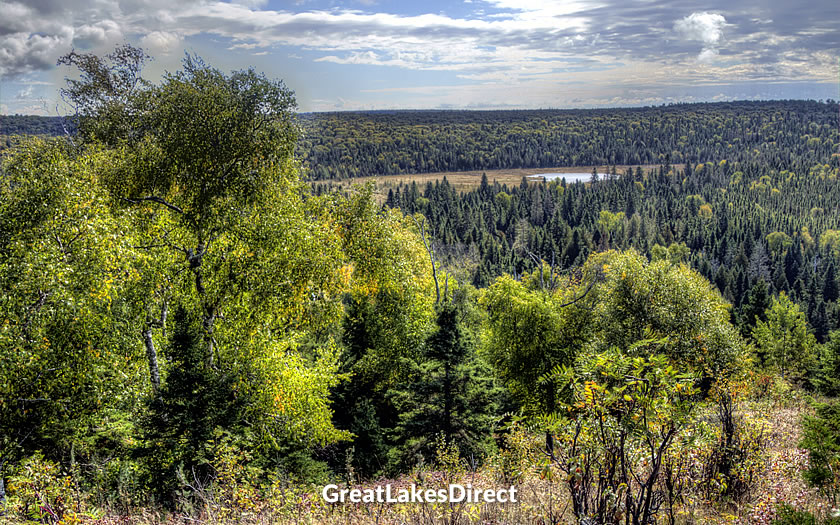
View of Isle Royale
The island is part of Isle Royale National Park, which spans over 850 square miles, including the surrounding waters. Isle Royale is the largest island in Lake Superior, measuring approximately 45 miles in length and 9 miles in width.
The island is known for its rugged wilderness, with dense forests, pristine lakes, and a wide array of wildlife, including moose and wolves.
The Apostle Islands are a group of 22 islands located off the Bayfield Peninsula in northern Wisconsin.
The islands are part of the Apostle Islands National Lakeshore, which covers over 69,000 acres of land and water.
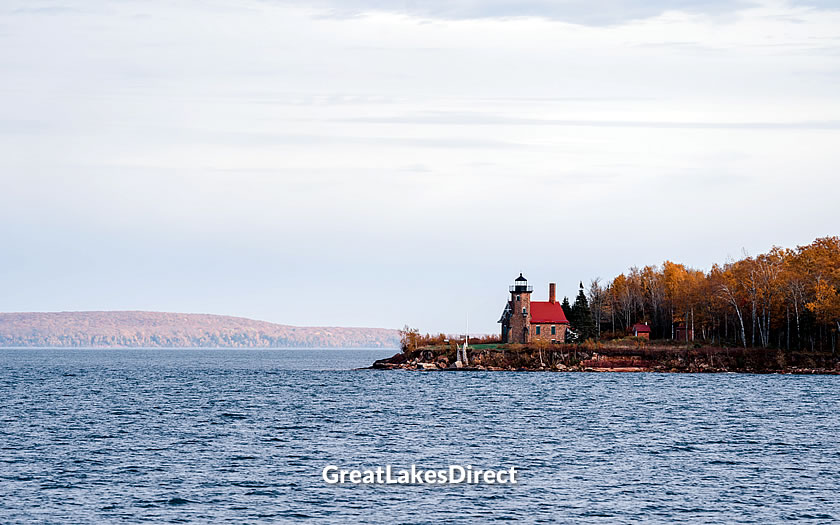
Sand Island Lighthouse in the Apostle Islands National Lakeshore
The Apostle Islands are known for their stunning natural beauty, with towering cliffs, pristine beaches, and crystal-clear waters. Visitors can explore the islands by kayak, taking in the breathtaking sea caves and rock formations along the shoreline.
The Apostle Islands are home to numerous historic sites, including several lighthouses and the remains of old fishing camps and quarries.
Madeline Island is the largest of the Apostle Islands and the only one with a year-round resident population.
The island is located just off the coast of Bayfield, Wisconsin, and is accessible by ferry.
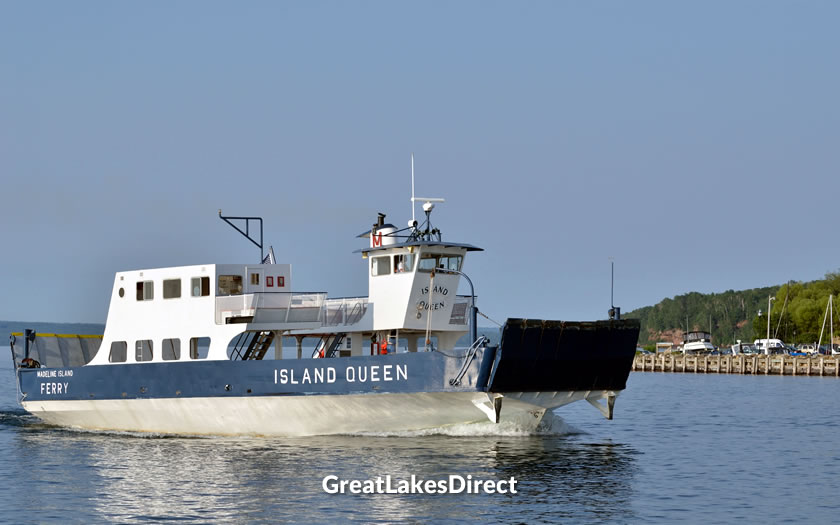
One of the ferries which serve Madeline Island
It was an important center of the fur trade in the 18th and early 19th centuries, and later became a popular summer retreat for wealthy families from Chicago and St. Louis.
Visitors to Madeline Island can explore its many historic sites, including the Madeline Island Museum and the La Pointe Indian Cemetery. The island also offers a variety of outdoor activities, such as golfing, biking, and swimming at Big Bay State Park.
The Lake Superior Circle Tour is a captivating journey that covers approximately 1,300 miles of scenic roads around Lake Superior, touching three U.S. states - Michigan, Wisconsin and Minnesota - and the Canadian province of Ontario.
The route mostly follows highways that hug the shoreline of Lake Superior. A minimum of 10 days to two weeks is recommended, with plenty of time to explore and relax.

Split Rock Lighthouse on the North Shore of Lake Superior
Notable attractions along the Lake Superior Circle Tour include Michigan's Isle Royale National Park; Wisconsin's Apostle Islands National Lakeshore; and Minnesota's North Shore Scenic Drive, a 154-mile stretch of Highway 61 that provides access to numerous state parks, waterfalls and the iconic Split Rock Lighthouse.
On the Canadian side of the tour, visitors can explore Ontario's stunning provincial parks such as Neys, Pukaskwa and Lake Superior. The city of Thunder Bay, with its heritage and Fort William Historical Park, offers a glimpse into the region's past.